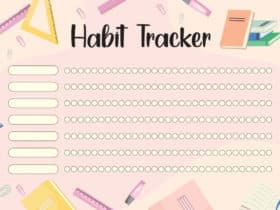Personal productivity is a key element in achieving our primary goals and objectives. It is defined as the sum of all the tasks and projects one can accomplish effectively in a set timeframe, without compromising quality. The inherent value of housing a personal productivity system cannot be understated. A well-executed productivity system can transform your life’s perspective, turning life’s hurdles into manageable tasks, while ensuring you consistently meet your targets.
What is a Personal Productivity System?
A productivity system is a sequence or set of actions or methods aimed at enhancing productivity. Essentially, it is a consistent and repeatable way of doing tasks or projects that need to be completed. It is structured to organize and coordinate your efforts to ensure you are using your time, resources and energy most efficiently.
There is a multitude of benefits to be reaped from a well-orchestrated personal productivity system. Primarily, it aids in maintaining focus towards achieving set goals. It increases your effectiveness and efficiency by reducing time wasted on unproductive tasks, unnecessary decision-making processes, or managing unwieldy workloads. Furthermore, it allows for an improved work-life balance, leading to a more fulfilled and healthier lifestyle both professionally and personally.
Why Simplicity is Important in a Productivity System
Complicated systems tend to be cumbersome and time-consuming, defeating the whole purpose of productivity. Simplicity, on the other hand, enhances efficiency. A simple productivity system is flexible and easy to use; it encourages users to stick with it, ensuring consistency and consequently, improved results.
When a system is complicated, it often leads to procrastination and decreases overall productivity. Simplicity eliminates unnecessary complexities, allowing you to concentrate on task completion rather than system management.

Elements of the Simplest Personal Productivity System
In the pursuit of personal productivity, simplicity often reigns supreme. An effective personal productivity system doesn’t need to be complex; in fact, the simplest systems are sometimes the most powerful. The foundation of such a system rests on three pillars: efficient management of time, keen attention to the task at hand, and prudent energy allocation.
Efficient Time Management
Managing time efficiently is the cornerstone of productivity. This component is all about mastering the clock—understanding how to allocate blocks of time to tasks that require our immediate attention and those that can be scheduled for later.
Prioritising Tasks
The process starts with the all-important task of prioritisation. This requires a good, hard look at all pending tasks and a strategic ordering of them based on urgency and importance. This exercise ensures that tasks with approaching deadlines or significant consequences for completion are handled first.
Creating a Hierarchy of Tasks
By categorizing tasks into various levels of importance, you create a hierarchy that guides your daily workflow. The objective is to clear the high-priority tasks, which often clears the path for tackling less critical tasks with greater efficiency and less pressure.
Scheduling and Sticking to the Plan
The act of scheduling is a deliberate one—meticulously carving out segments of time for each task and committing to this plan. This commitment transforms the abstract concept of time into a tangible schedule.
Consistency in Execution
It is not enough to just create a schedule; the true test of efficient time management is adhering to it. Consistency in this practice cements productivity, turning what could be chaotic and reactive into something that is controlled and proactive.
Attention Management
In a world brimming with alerts and distractions, the ability to manage one’s attention determines their level of productivity. Attention management is the deliberate control of your focus to the exclusion of all else.
Eliminating Distractions
The first step in attention management is creating an environment conducive to focus. This often means purging your workspace of unnecessary clutter, turning off notifications, or even using noise-cancelling headphones to mute the external world.
Controlling Digital Interference
In this digital age, controlling the urge to check emails or browse social media is a critical aspect of managing attention. Tools and techniques, such as app blockers or scheduled social media time, can be helpful in this regard.
Focusing on One Task at a Time
While multitasking can be tempting, it’s a well-known productivity myth. Tackling one task at a time ensures that it receives your full attention and is completed with greater quality and in less time.
Single-Tasking Approach
This approach aligns with the philosophy that the mind works best when it can concentrate on a single process. Switching between tasks can not only decrease the quality of work but can also lead to increased levels of stress.
Energy Management
Ultimately, your productivity is a function of your energy levels. Managing your energy smartly is about understanding your own rhythm and respecting your body’s needs.
Importance of Sleep and Rest
Never underestimate the power of sleep and the restorative effect it has on your ability to work productively. Quality sleep and strategic rest breaks are not luxuries; they are essential components of a productive lifestyle.
Taking Breaks Strategically
Interspersing short, focused breaks throughout the workday can prevent fatigue and maintain a high level of cognitive functioning. This might include taking a walk, doing a brief meditation, or simply stepping away from the computer screen for a few moments.
Balancing Work and Personal Life
Ignoring the balance between professional demands and personal well-being can lead to diminished productivity in the long run. It’s crucial to establish boundaries between work and leisure to avoid burnout.
Preventing Burnout
A balanced approach to work ensures that you have sufficient downtime to recharge, leading to sustained productivity over longer periods. Overworking might provide short-term gains but often results in long-term productivity losses.
Implementing the Simplest Personal Productivity System
For a productivity system to truly be effective, it’s not enough just to choose one — it’s critical that it’s implemented appropriately. The effectiveness of any productivity system lies in its application and consistent use. This means understanding its core principles and adapting them to your personal and professional life in a way that enhances your efficiency and effectiveness.

Setting Up the System
The first step in the establishment phase is to define your tasks. This involves taking stock of all your commitments, projects, and goals. Once you’ve outlined these tasks, the next step is categorizing them into levels of importance. This can be done using various criteria, such as deadlines, impact, and personal or professional value.
In addition to defining and categorizing tasks, applying efficient principles of time, attention, and energy management is crucial. Time management involves planning and exercising conscious control over the amount of time spent on specific activities, to increase effectiveness, efficiency, and productivity. Attention management is about focusing on the right tasks at the right times, ensuring that your energy is directed towards high-priority activities. Energy management involves understanding your personal energy cycles and aligning tasks to these cycles for optimal productivity.
Tips for Maintaining the System
To maintain the system effectively, implement regular system reviews. These reviews should be scheduled and should focus on evaluating the effectiveness of the system, identifying areas for improvement, and making adjustments as necessary. This iterative process ensures that the system remains aligned with your changing needs and priorities.
It’s important to acknowledge that trends, priorities, and productivity tools change over time. Consequently, your personal productivity system should be flexible and adaptable. This means being open to experimenting with new methods, tools, and approaches, and incorporating them into your system if they prove to be effective.
Lastly, remember that a productivity system is a means to an end, not an end in itself. The goal is to enhance your ability to accomplish tasks and achieve your goals, not to get bogged down in an overly complex or rigid system. Simplicity and flexibility are key to maintaining an effective personal productivity system. Keep tweaking and adjusting it until you find a rhythm that works best for you.
Conclusion
The paradigm of personal productivity hinges significantly on the implementation of an effective yet simple productivity system. Ultimately, you must adapt any productivity system to suit your individual needs and circumstances, as productivity is highly personal. Embrace the simplicity of productivity and excel in your ambitions.


















